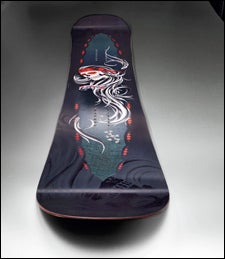1. Same name, completely redesigned board. Arbor updated this true twin with a bit of reverse camber (an upturned tip and tail) and a varying, progressive sidecut that puts two contact points under your toes and heels, where you push the hardest. The result? Rock-solid edge grip. “It held on groomers surprisingly well,” said one tester. “I felt very comfortable going exceptionally fast.”
Snowboard
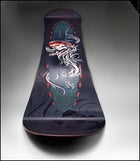
2. The Draft’s new rockered shape means even more control and fewer edges to catch. But unlike with some reverse-camber boards, its aptitude for pop isn’t compromised. The board’s sustainably harvested Australian lacewood spine┬Śwhich improves durability and eases presses and butters┬Śensures the board leaves the ground with as much power as it did pre-rocker.
3. Soft copper edges take some of the bite out of a park’s hard surfaces, making the Draft an especially forgiving freestyle board. But it’s also a lot of fun in the trees. The raised tip and tail help keep you afloat in the fluffy stuff while the soft flex┬Śa by-product of the rockered shape and tapered wood spine (visible through the topsheet)┬Śmakes for effortless powder turns.
(149.5, 153, 155, 158.5) $395
K2 Sidestash Alpine Skis
Good for All Mountain
K2 Sidestash
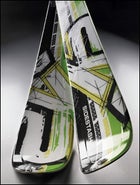
1. You’ll see a lot more rocker┬Śupward bend┬Śin all manner of big-mountain-inspired skis that work on resorts too. But K2 nailed the all-rounder with the SideStash’s gentle tip rocker. It pops effortlessly to the surface in powder, but because the tail is traditional┬Śflat and square-tapered┬Śyou can carve turns on resort hardpack as well.
2. As one tester put it, it really is “the ultimate western ski”: light enough for touring but, thanks to the metal-and-wood laminate construction, burly enough for crusty morning corduroy. The rocker allows you to initiate the turn with little tip pressure, and skiers of all abilities were impressed with how balanced it felt in the crud.
3. Skis like the SideStash (and the V├Âlkl Gotama) handle powder so well that, unless you’re an Alyeska or Squaw Valley local, you probably don’t need a pure powder ski anymore. Our advice: Pair the SideStash with a Marker Duke binding to create the ultimate one-ski quiver for backcountry, sidecountry, and resort skiing.
(139/108/127) $950
Black Diamond Justice Backcountry Skis
Black Diamond Justice
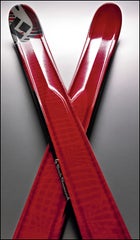
1. With a slightly rockered tip, minimal camber, and plenty of girth (115 underfoot), the Justice is a confidence-inspiring powder board. But it's not so fat or rockered that it feels skittish on firmer snow. In other words, it's just right: not as stiff as the Zealot, BD's big-mountain ski, with a surfy feel similar to the Megawatt, their powder-specific pig.
2. For such a light ski, the wood-core Justice has remarkable “pop,” “guts,” plus any of the dozen or so other words testers used to describe how lively and unflappable it performed in leftover snow. You can see how it saves weight: BD simply machines away core material where it's not needed, which is why the topsheet looks like a contour map.
3. What to mount it up with? We're glad you asked. If going down┬Śbe it at the resort or in the backcountry┬Śis your number-one priority, mate it with a beefier binding like an NTN or Marker Duke. But our preference would probably be to pair it with Dynafit or Voile bindings for the ultimate ski-it-all touring setup.
(140/115/125, 9.2 lbs) $729
class=”bg-videobtn”>
Cloudveil FirsTurn Hooded Jacket
Cloudveil Firs Turn Hooded Jacket
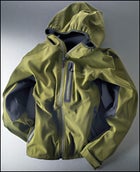
1. One of the most versatile soft shells we’ve seen, the FirsTurn easily beat back steady 20-mile-per-hour winds and driving snow at New Mexico’s Taos Ski Valley yet also kept us comfortable on a sunny, 40-degree day of backcountry laps. Ski, skate, run┬Śthe FirsTurn even held up on a cold and rainy bike commute. “Harder than giving up my woobie,” said a testerreluctant to give it back.
2. At the end of the day┬Śespecially a long one in the backcountry, with changing weather conditions and varying levels of exertion┬Śa jacket is only as good as its main ingredient. The FirsTurn’s tightly woven, DWR-coated polyester face has just enough stretch for athletic, top-to-bottom descents, and its three mesh-backed pockets (there are no pit zips) make it breezy enough for uphill slogs.
3. In a world of overpriced and overfeatured soft shells, the FirsTurn is refreshingly simple: It’s streamlined enough to be your go-to, all-season soft shell. And, at 150 bucks, a screaming deal. You get what you need: a helmet-compatible hood that doesn’t limit visibility or motion, and two internal pockets┬Śone zippered and the other big enough to hold a Nalgene bottle. And that’s it.
(1.5 lbs) $150
Gregory Targhee Backpack
Gregory Targhee
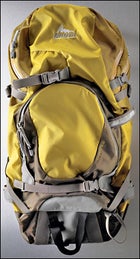
1. Versatility is the Targhee’s mantra. With a 2,100-cubic-inch capacity, slick design, and various ski- and board-carrying options (skis can be carried A-frame, diagonally, or vertically), it proved ideal for everything from quick dawn patrols to a 7,000-foot ski-mountaineering day trip in British Columbia. And, when not in use, all the straps and clips disappear into pockets for snag-free skiing.
2. Even though it’s a respectably light pack, comfort is king. Its suspension is the only one we’ve seen designed specifically to carry the awkward load of your skis, with two extra support bars that transfer your boards’ cumbersome weight directly to the pack’s frame. Toss in the thin but surprisingly plush padding and it’s no wonder our testers were all politicking to keep this pack after the test.
3. Our team appreciated the insulated sleeve for a hydration bladder (sold separately), all the pockets┬Śincluding two avy-tool sleeves┬ş┬Śand the tough proprietary fabric and webbing (which Gregory claims is three times stronger than comparable stuff). After four days of abuse┬Śincluding throwing it in the helicopter’s basket and boot-packing up narrow rock chimneys┬Śit still looked brand-new.
(3.8 lbs) $199
Nike LunarGlide+ Running Shoes
Nike Lunarglide
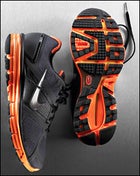
1. A road shoe designed for both neutral runners and overpronators? Believe it. The LunarGlide’s midsole has two foams┬Śa soft type that cushions the direct heel hit of a neutral runner, and a harder one that’s set at an angle to correct mild to moderate pronation. Our testers confirmed that the system works: The support is there when you need it, and not when you don’t.
2. With plush fabric, generous padding, a snug heel, and an impressively spongy midsole, these shoes felt incredibly comfortable, from the moment they left the box to the end of our testers’ longest runs. And with truly gender-specific versions for men and women┬Śaddressing differences from last shape to arch-support needs┬Śtesters from both locker rooms were equally thrilled.
3. We heard it over and over: “It’s like I wasn’t even wearing shoes.” The flexible forefoot and barefoot-inspired outsole offers an outstanding feel for the road (without bringing it too close for comfort), and the slipper-like upper ditches traditional overlays for a seamless wrap. The result? A blissfully comfortable shoe that’s both nimble running fast and supportive running slow.
(11.5 oz) $220
Tubbs Flex Alp Snowshoe
Tubbs Slex Alp
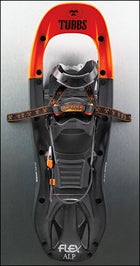
1. In everything but deep powder, the Alp simply outperformed every other shoe in the test. The flexible plastic deck affords exceptional stability and grip whether you’re hiking for turns or strolling on the rec path. The flexible tail of the shoe is softer than the supportive midfoot, absorbing shock on descents and rolling confidently into each step, while the free-pivot binding provides excellent lateral stability.
2. Dialing in the perfect fit is, literally, a cinch. Two easy-to-pull straps lock down the binding midfoot and┬Śthis is the best part┬Śtuck away and never drag or otherwise interfere. An adjustable, floating pad under the straps disperses pressure and makes these snowshoes compatible with a wide variety of boots. And both the quick-flip heel lifter and heel strap are easy to tighten, even with bulky mittens.
3. Don’t be afraid to tackle steep or icy terrain. With a cirque of aggressive, sharklike teeth underfoot, serrated crampons running the length of the decks, and tiny┬Śbut surprisingly tenacious┬Śtail crampons, the Flex Alps dug in better than anything else we tested. Even on the tricky summit of Vermont’s Mount Mansfield, when other shoes started to slip, the Alps were rock-solid. Available in one size only.
(4.5 lbs; 24″) $220
Patagonia Reconnaissance Resort Jacket
Tubbs Slex Alp
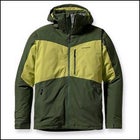
1. The Reconnaissance uses a DWR coating and a generous amount of synthetic insulation (Prima┬şLoft Eco) to keep you toasty on long, windy lift rides. On the way down, pit zips and highly permeable soft-shell fabric quickly vent the heat from exertion. “Sunny and dry, dumping wet snow, high winds and frigid temps ┬ů whatever the weather was doing, I always reached for this jacket,” said one tester.
2. For a relatively light jacket, the Recon has a surprising array of creature comforts: Generous amounts of brushed polyester soften the chin and back of the neck, and there’s a season-pass holder and pockets galore, including an iPod-compatible chest pouch. And while the tough fabric isn’t stretchy, a small elastic panel in the middle of the back allows the jacket to flex with you.
3. For spring skiing or sidecountry tours, you can remove the powder skirt and insulated hood. Some testers wished the pit zips were bigger, but everyone liked their placement below the armpits, which allows access around backpack straps.
(2.4 lbs) $375





